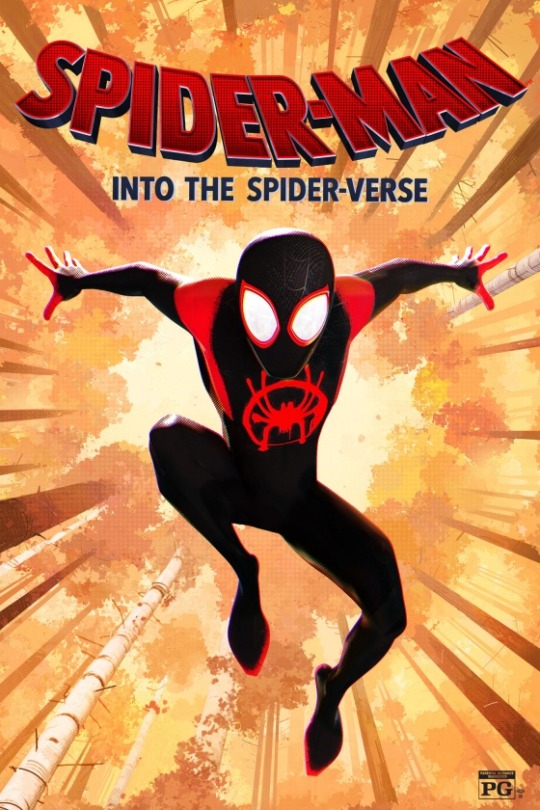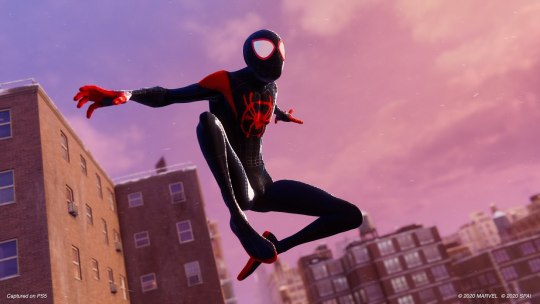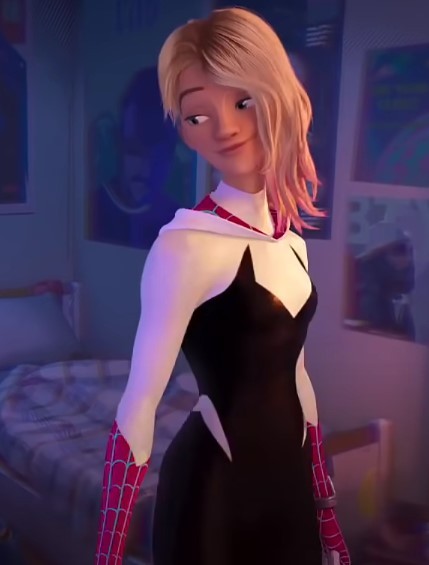Don't wanna be here? Send us removal request.
Text
Multimedia Blog 3: Barack Obama's Instagram
Who is Barack Obama? Barack Obama was the 44th president of the United States, who was notable for many things. This included being the first black president and being a Nobel Peace Prize winner. Barack Obama’s presidency has sparked debates over the idea of a “post-racial” America and help spark discussions on systemic racism, intersectionality, and how minority voices can be uplifted. To better understand President Obama and how he relates to this course, we can investigate his Instagram posts.

This Instagram post promotes his Netflix series Working: What We Do All Day, inspired by Studs Terkel’s book. The series highlights the stories of everyday workers in industries like hospitality and technology and emphasizes the interconnectedness of people’s lives through work. The post addresses themes of race, class, and cultural identity by amplifying the voices of often overlooked workers in mainstream media, particularly women of color in caregiving roles.

Next, this Instagram post by President Obama celebrates Women’s History Month by highlighting Cary Shaw and Sharika Harris, two women working on the construction of the Obama Presidential Center in Chicago. Cary, a concrete construction worker, and Sharika, a plumber, both grew up in neighborhoods near the Center. They trained with Chicago Women in Trades, part of the Obama Foundation’s initiative to involve residents in skilled labor. This post reflects the intersection of race, gender, and labor, showcasing how empowering women of color in trades challenges stereotypes and broadens representation. Their stories emphasize resilience, community pride, and breaking barriers in male-dominated industries.
This was one of my favorite posts to highlight as it reminded me of Sojourner Truth’s famous speech “Ain’t I a Woman?”. Truth’s speech, delivered in 1851, challenged the intersecting oppressions of race and gender, emphasizing the strength and capability of Black women in a society that doubted their value and humanity. Sharika and Cary’s pride in their work reflects Truth’s assertion of women’s equal capacity, dismantling the stereotypes that persist in labor and society. By amplifying their stories, Obama continues the legacy of celebrating Black women’s agency and achievements, reinforcing the call for justice and equity that Truth so powerfully articulated.

In this Instagram post, Barack Obama commemorates Black History Month by reflecting on its significance as a part of the collective American story. The black-and-white image features a young boy, Clark Reynolds, gazing upward with hope and admiration as he stands behind a rope barrier, while an adult’s hand gently rests on his face. This tender moment symbolizes the passing of wisdom and responsibility from one generation to the next.
In the caption, Obama emphasizes that Black History Month is not just a celebration of achievements but a moment to acknowledge the resilience, contributions, and sacrifices of Black Americans throughout history. He highlights the enslaved people who built the White House, soldiers who fought for freedom, and scientists and inventors who propelled innovation. Obama ends with a call to action, urging us to continue striving for equality daily to honor past heroes and inspire the next generation.
Barack Obama’s Instagram post for Black History Month reflects Langston Hughes’ poetic vision of resilience and aspiration in “Let America Be America Again.” Obama emphasizes the shared experiences of Black Americans, from enslaved individuals to inventors, whose struggles and triumphs helped shape the nation. This mirrors Hughes’ call for an America where equality and justice truly belong to all, not just ideals promised but yet to be fulfilled.
Obama’s tribute to unsung heroes and his recognition of their impact echo’s themes of generational responsibility. He ties this commitment to the future, embodied by young individuals like Clark Reynolds, who represent the promise of a better tomorrow. Similarly, the article on millennial attitudes toward race underscores that younger generations, far from “post-racial,” remain deeply invested in addressing systemic inequities. Together, Hughes’ poetry, Obama’s message, and the millennial perspective highlight the enduring struggle for justice and unity in America.
Through Barack Obama’s Instagram posts, it doesn’t just display President Obama’s leadership. It also tells the continuing story of America, through bridging the past with the present. The posts celebrate the progress that has been made in our country. At the same time, it continues to encourage and motivate people to make tomorrow a better one through embracing intersectionality and fighting for racial justice just like what we have been reading all about this semester!
Sources Cited:
Hughes, Langston. "Let America Be America Again." Poets.org, Academy of American Poets, https://poets.org/poem/let-america-be-america-again. Accessed 13 Dec. 2024.
Obama, Barack. “When I Was in College, I Came Across the Book Working by Studs Terkel...” Instagram, 27 Apr. 2023, www.instagram.com/p/Cril-IbNgol/?hl=en. Accessed 8 Dec. 2024.
Obama, Barack. “For Women’s History Month, I Wanted to Share the Stories of Cary Shaw and Sharika Harris...” Instagram, 10 Mar. 2023, www.instagram.com/p/CpnfjIBvm_M/?hl=en&img_index=1. Accessed 9 Dec. 2024.
Obama, Barack. “Black History Month Shouldn’t Be Treated as Though It Is Somehow Separate from Our Collective American History...” Instagram, 1 Feb. 2023, www.instagram.com/p/CoIskZ9vrqo/?hl=en. Accessed 9 Dec. 2024.
SharlettesWorld. “Sojourner Truth ‘Ain’t I a Woman?’ Speech (1851) – Read by Alice Walker.” YouTube, 14 Mar. 2018, www.youtube.com/watch?v=rMc4th6o5Io. Accessed 9 Dec. 2024.
0 notes
Text
Multimedia Blog 2 - Spiderman: Into The Spider-Verse

For my second Tumblr post, I will focus on Spiderman: Into the Spider-Verse. This film follows Miles Morales, a teenager who becomes Spider-Man after being bitten by a radioactive spider. While struggling with mastering his powers, Miles discovers a particle collider built by Kingpin that accidentally pulls Spider-people from alternate dimensions into his world. With mentorship from an older, disheveled Peter Parker and a team of Spider-heroes from alternate dimensions, Miles learns to embrace his role as Spider-Man. Together, they battle Kingpin to shut down the collider and prevent their universes from ending. In the end, Miles would defeat Kingpin, send the others home, and proves he's worthy of the Spider-Man mantle.
To analyze Spider-Man: Into the Spider-Verse in the context of racial and ethnic identities, it’s imperative that we evaluate how the film broadens the traditionally white, male, and heterosexual representation of superheroes in popular American visual culture. Miles Morales, a biracial Afro-Latino protagonist, challenges normative narratives by showcasing an authentic intersection of race, ethnicity, and socioeconomic class. The vibrant urban setting, Miles’s bilingual dialogue, and cultural touchstones (e.g., graffiti and music) root his story in a highly relatable cultural identity.

One iconic example that showcases Miles Morales’s diverse heritage is his spider suit. The image of Miles Morales’ iconic suit is a powerful visual that encapsulates his unique identity as Spider-Man. The suit combines the familiar Spider-Man aesthetic with bold, distinctive elements that reflect Miles’s Afro-Latino heritage and individuality.
The black base color, accented with vibrant red webbing and a striking spider emblem, contrasts with Peter Parker's classic red-and-blue design. This darker palette signifies a departure from tradition, marking Miles as a fresh, modern hero. The graffiti-inspired touches, including the emblem's hand-drawn appearance, nod to Miles's artistic interests and urban culture, grounding his superhero identity in his personal experiences.
When he dons the suit for the first time, it symbolizes Miles’s growth and self-acceptance. He is no longer imitating the Spider-Men before him. Instead, he is claiming his place in the multiverse as his own version of Spider-Man. This transformation resonates with themes of representation, as the suit visually asserts that heroes can come from any background, breaking the mold of stereotypical superhero imagery. This design serves not just as a superhero costume but as a representation of cultural pride and individuality, making it a standout symbol in popular visual culture.

Intersectionality is at play as the film incorporates diverse Spider-people: Gwen Stacy challenges gender stereotypes in superhero media; Spider-Man Noir and Peni Parker represent different eras and styles of storytelling, emphasizing a broader cultural reach. This diversity disrupts hegemonic representations, reflecting how modern visual culture seeks inclusivity.
The film’s animation style also mimics comic book aesthetics while integrating hip-hop, a distinctly African American cultural art form, into its soundtrack, further embedding Miles’s identity in every aspect of the narrative. The integration of African American culture into the film reminds me of when we looked at the works of Romare Beardon.
Bearden’s use of layered textures and fragmented images to depict urban experiences parallels the film’s graffiti-inspired animation, which reflects Miles Morales’s Afro-Latino identity. Both Bearden’s art and the film emphasize cultural specificity, with Bearden drawing on African American music and folklore while the movie incorporates hip-hop, bilingual dialogue, and Brooklyn’s lively atmosphere. Each uses layering; Bearden in physical collages, the film in its comic book-inspired visuals and sound design to convey movement, rhythm, and complexity. Like Bearden’s celebration of individuality and culture, Into the Spider-Verse redefines representation in visual media, showing that heroes, like art, can come from diverse, multifaceted backgrounds. Both elevate marginalized voices through innovative storytelling.
Spider-Man: Into the Spider-Verse is a groundbreaking film that redefines representation in visual culture through the celebration of diversity and embracing intersectionality. Through Miles Morales’s Afro-Latino identity, the film defies traditional superhero narratives, showing how cultural pride and individuality influence a hero’s journey. Drawing parallels to Romare Bearden’s art, the movie uses vibrant visuals, layered storytelling, and cultural specificity to elevate marginalized voices. By uniting characters across differences and championing inclusivity, Into the Spider-Verse sets a powerful precedent for future storytelling in American visual culture, proving that heroes can come from any background and inspire audiences worldwide.
Sources Cited:
Bearden, Romare. Guitar Magic. 1986, Museum of Fine Arts, Boston. https://beardenfoundation.org/wp-content/uploads/2017/12/GuitarMagic_1986.jpg. Accessed 1 Dec. 2024.
"Gwen Stacy (Spider-Verse Trilogy)." Heroes and Villains Wiki, Fandom, www.heroes-and-villain.fandom.com/wiki/Gwen_Stacy_(Spider-Verse_Trilogy). Accessed 30 Nov. 2024.
"Spider-Man: Into the Spider-Verse Suit Reveal | Marvel’s Spider-Man: Miles Morales." YouTube, uploaded by Marvel Entertainment, 30 Oct. 2020, www.youtube.com/watch?v=x2voszREYQg&ab_channel=MarvelEntertainment. Accessed 1 Dec. 2024.
"Spider-Man: Across the Spider-Verse Title Key Art." Sony Pictures, https://www.sonypictures.com/sites/default/files/styles/max_560x840/public/title-key-art/spiderman_verse_rating_0.jpg?itok=N_U_lGHQ. Accessed 3 Dec. 2024.
0 notes
Text
Multimedia Blog 1 - Fresh Off The Boat

Fresh Off the Boat is a comedy television series inspired by chef Eddie Huang’s memoir of the same name. It aired from 2015 to 2020 and is notable for being one of the first network sitcoms in decades to feature an Asian American family at its core.
Set in the 1990s, Fresh Off the Boat follows the Huang family as they move to suburban Orlando from D.C.’s Chinatown. Louis pursues his dream of running a steakhouse, while Jessica upholds Taiwanese traditions and instills ambition in their three sons. Eddie, the rebellious, hip-hop-loving eldest, navigates school as an Asian American teenager, while his younger brothers, Emery and Evan, add their unique quirks to the family dynamic.
The series balances humor and heartfelt moments while addressing cultural identity, family dynamics, and the immigrant experience. Its comedic take on assimilation, parenting, and generational differences resonated widely with audiences and is helping pave the way for greater representation in visual media.
For this post, we’ll explore how the show highlight’s cultural identity and assimilation and showcase intersectionality in representation. Throughout the show, there is a constant struggle between Jessice and Eddie. Jessica is determined to uphold traditional values while Eddie wants to embrace American pop culture and hip-hop. This highlights an issue that is commonplace between a first-generation immigrant and their second-generation immigrant children. For a first-generation immigrant, there is a lot of pride in a person’s culture as it is what they grew up with. For many first-generation immigrants, their culture is almost essentially a part of their identity.
One example of this dynamic is in “Success Perm” (Season 1, Episode 3), Jessica Huang enforces traditional values like hard work and academic success, clashing with Eddie’s love of hip-hop and desire to fit in at school. Jessica imposes stricter rules and considers giving Eddie a "success perm" to symbolize discipline, while Eddie focuses on navigating middle school and impressing classmates. The episode explores generational and cultural tensions within immigrant families. Ultimately, Jessica learns success can take various forms, and Eddie respects her perspective while pursuing his passions, highlighting the challenges first-generation kids face balancing two cultures.
Next, the show also does a great job at portraying intersectionality in representation. Although, we may all be different, there are a lot of overlapping between systems of oppressions and discrimination that creates unique experiences on an individual level. Immigrant families are unfortunately caught up in this complex web as well.
An example of an episode that highlights the immigrant experience is “The Shunning” (Season 1, Episode 2). In this episode, the Huang family struggles to fit into their new suburban community in Orlando. Louis tries to promote his Western-themed steakhouse, Cattleman’s Ranch, by participating in a neighborhood block party, a quintessentially American tradition. Meanwhile, Jessica feels out of place among the other moms, who prioritize socializing and gossip over her more practical and results-oriented mindset.
Eddie, on the other hand, deals with his own challenges at school. He wants to impress his classmates and assimilate but is embarrassed by his family’s cultural differences, particularly their food and customs. When Eddie invites his crush to the block party, he faces ridicule for bringing a traditional Chinese dish instead of something “cool” or American.
The episode underscores the tensions immigrants, and their children face as they navigate cultural preservation while striving for acceptance in a new environment. The experiences resonate broadly with families from various ethnic backgrounds who face similar challenges of feeling "othered" in predominantly white spaces.
This episode reminded me of one of our readings, “Toyo Miyatake and “Our World”” by Karin Higa. One of the things Higa highlighted in that reading was how the Japanese Americans prisoners in the Manzanar concentration camp, enforced and developed a hyper-American identity for themselves. Their reasons for this hyper-American identity were to feel included in the rest of American society while they were being exclude via the camp. Similarly, Eddie and Louis both seek to create a more American identity for themselves to feel more included in American society, through a block party and wanting to show off more American food, respectively.
Overall, the show does a great job, discussing the perspective of immigrants in America. It intertwines the common themes associated with immigration, such as assimilation and cultural differences, with broader themes such as racism and intersectionality. It is truly a show that will define visual media for years to come.
SOURCES CITED:
Higa, Karin. "Toyo Miyatake and 'Our World'." Only Skin Deep: Changing Visions of the American Self, edited by Coco Fusco and Brian Wallis, Harry N. Abrams, 2003, pp. 335–343.
“Success Perm.” Fresh Off the Boat, season 1, episode 3, created by Nahnatchka Khan, performance by Constance Wu and Hudson Yang, ABC, 10 Feb. 2015.
“The Shunning.” Fresh Off the Boat, season 1, episode 2, created by Nahnatchka Khan, performance by Randall Park, Constance Wu, and Hudson Yang, ABC, 4 Feb. 2015.
1 note
·
View note